
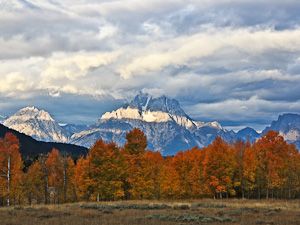
There were more than eight hundred entries this year in twenty-four categories ranging from the Newcomer Award to Best People and Nature Program to Best Cinematography and Best Editing. Filmmakers, from amateur to professional and any level in between, entered films into the contest, and each one was viewed by a series of panels made up of nearly one hundred judges from around the world. This year's finalists judges included: award-winning producer and director Caroline Brett; Wildlife Conservation Society senior Producer Natalie Cash; filmmaker Liesl Clark; writer and producer David Elisco; and photographer, author and Yellowstone to Yukon Conservation Initiative's Strategic Advisor Harvey Locke.
One of the big winners this year was Nature's recent episode "Broken Tail: A Tiger's Last Journey," the story of life and death, crisis and survival in India's Ranthambhore National Park. The film, following the filmmaker's pilgrimage to document a mysterious tiger, Broken Tail, throughout his life, won the Festival's Grand Teton Award, a best of show award, as well as Best Conservation Program and Best Hosted or Presenter-Led Program. Other winners included: The Last Lions from Wildlife Films and National Geographic that told a dramatic story of a lone lioness and her cubs in Botswana, which won Best Theatrical Program, Best Editing and Best Original Score; and Helgoland, from German filmmaker Robert Morgenstern and Studio Hamburg DocLights Naturfilm, which features incredible imagery from the island of Helgoland in the North Sea and won this year's Marian Zunz Newcomer Award.
The New Conservation Message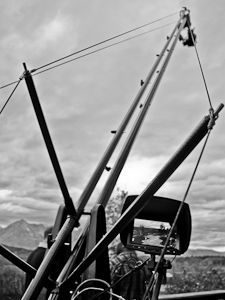
"All ten of us were very excited," she joked. "At its core, this festival started out as an occasion for industry professionals to come together for development, this fabulous film competition, and they get to celebrate the world's finest works."
Since 1991, Jackson Hole has hosted the Wildlife Film Fest, which is considered one of the most prestigious wildlife film festivals in the world. Every two years, more than six hundred filmmakers, producers, enthusiasts and commissioners from major television networks and film agencies descend on Grand Teton National Park, home to some of the most stunning landscapes and wildlife in the world, to see some of the best new wildlife films and new technologies that are altering the theatrical playing field.
Previous years generally featured the films commonly shown on channels such as the National Geographic Channel, PBS and The Discovery Channel – which feature both moving images such as sweeping landscapes and footage that skims the surface of the Serengeti in Africa or the vast, unending still waters of the Pacific Ocean – as well as detail-saturated science films shown to students in biology class and programs that highlight endless facts about rare animals and places with which audiences all too often feel no personal connection. These films, commonly called-blue chip films, avoid political or social controversies in favor of scenery and science.
This year, however, the Festival has found a new, activist voice in the productions of up-and-coming conservationists. In addition to the production houses, smaller conservation organizations such as Panthera, One Ocean Interactive and the Save Our Seas Foundation contributed works to various categories, which changed the strictly technical and scientific tone of many competitions to a tone of passion, compassion and problem solving.
According to award-winning filmmaker Chris Palmer, this emphasis on conservation and ethics is a recent development.
"More and more people like me who are interested in conservation are making films and finding ways to make them more entertaining, to combine entertainment and the conservation message," he said. "But a few years ago, people weren't into conservation. You still have a bit of a problem selling these films because networks and broadcasters worry that no one will be interested in watching them."
Concerns about pitching and selling conservation-based films haven't stopped the visionaries, however. In fact, Executive Director Samford said, some of the personal stories represented this year are simply striking.
"Many films this year are great examples of this new idea that you have to work within the community in order to achieve sustainable conservation," she said. "One of the interesting things this year is that these stories really are reflections, personal narratives of conservation experiences... deeply personal accounts of a relationship with a place."
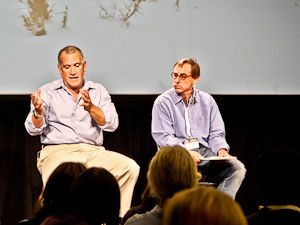
With narration that feels more like a passage from a private journal than an educational film, "Broken Tail" humanizes the tigers and their struggle for recovery in a way that science cannot. Viewers learn less about the science of Bengal tigers – a topic covered in countless Nature-esque shows – and more about individual personalities, likes and dislikes, traits like curious and playful and fearless, connections that many of us haven't been able to make until now. The episode also demonstrates on-the-ground conservation efforts and tangible contributions we can make to the protection of this animal that now, somehow, feels more real.
Some conservation-themed films aim to reach the next generation of environmentalists. Panthera's My Pantanal addresses jaguar conservation in Brazil's Pantanal from the perspective of a child whose family lives on a cattle ranch. The ranch is one of two on wildlife preserves in the area, where Panthera works with local ranchers to find sustainable ways to live with jaguars.
"Initially, the goal for the film was to reach out to a local audience, the local communities in the Pantanal of Brazil, people that are living on the front lines with wild jaguars who are experiencing conflict, experiencing loss of cattle," said Andrea Heydlauff, director and writer of the film and vice president of Panthera. "We are trying to create something that is educational but entertaining with local context."
The organization works with cattlemen's associations to reach out to ranchers and community members who might not otherwise cooperate with jaguar conservation efforts. "It's not just us going in and saying, 'Hey, we're a conservation group and we want you to do these things," said Heydlauff. "They don't want to talk to us. So we work with the right groups to reach out to tell people that we know there are conflicts and there are ways to help."
My Pantanal addresses some of these issues with the innocence of the main character and narrator, a young cowboy named Aerenilso who is eager to grow up to be a rancher like his dad. Aerenilso not only loves spending time in the field with the cattle, but he also loves to spot the jaguar hiding in the trees along rivers that flow through the ranch. With the enthusiasm that often only children can possess, he talks about the dangers jaguars can pose to cattle and also the importance of protecting these big cats. "The Pantanal needs both cows and jaguars," he pleads in the movie before he talks about ways to mitigate conflicts in a simple, effective voice.
Messages like these dominated the field at the Wildlife Film Fest this year, creating a new dynamic in the wildlife filmmaking industry: shooting in the wild is no longer about pretty landscapes and herds of galloping zebras or endless hours of quoting science facts. Conservationists are teaming up with filmmakers to produce passionate films with a consciousness, and this new ethical mindset has produced some incredible films at this year's Wildlife Film Fest.
Newcomers Enter the Playing Field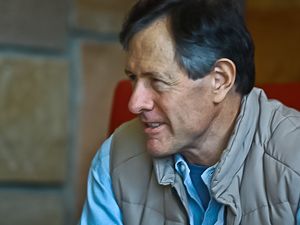
"We always try to create opportunities to demonstrate developing talent," Samford said. But this year, things are a little different.
Each competition features a category specifically for newcomers, and this particular award is considered to be a strong, extremely competitive award. According to Samford, however, newcomers this year are competing in several different categories, such as Best Conservation Program and the Conservation Hero award, going up against companies that have been making wildlife films for decades.
"These newcomer films are competing in major categories and competing very, very well with really experienced filmmakers," said Samford. "I think it speaks to the integrity of voice and the importance of having a strong story. There are pretty remarkable films, and it's really exciting to see them here."
But what had led to the influx of young filmmakers in recent years?
Filmmaker Allison Argo, who won the first newcomer award, attributes the increase in numbers and skill to a connection with and dedication to the natural world.
"You look at the themes of most of these films, and they really are about environmental conservation, about climate change, about protecting wildlife," Argo said. "Maybe it's because our environment is in such dire straits, but there's a lot of passion here."Accessibility to media outlets and inexpensive, high quality production equipment has also allowed budding filmmakers to develop increasingly stunning films about wildlife and conservation, allowing them to follow their passions without investing millions of dollars. Creative Commons licenses allow producers to find free still images, short clips, sound effects and music and add them to films. Website such as Jamendo, Flickr and the U.S. Library of Congress have opened their doors to those who want to use content and are especially friendly to non-profit organizations and young artists. Numerous sites offer manuals and instruction on developing independent films, and film festivals and symposia specifically showcasing independent and amateur films are beginning to crop up all over the world.
"Media has become more accessible; it doesn't cost a fortune to get into the game," Samford said. "If you have something compelling to say, there's a way to do it that doesn't require spare millions, and you have a vehicle to reach many, many people without having to approach National Geographic or Discovery. You do not have to be a major to have a reach." She describes media outlets as becoming more democratic, allowing amateur or emerging filmmakers to communicate their messages effectively without necessitating a large investor.
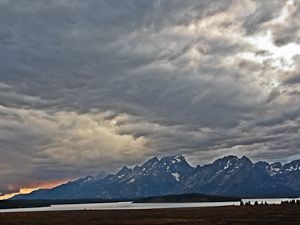
"There is greater and greater talent out there, and we've got some really dedicated conservationists who are beginning to get into filmmaking, and they are just beginning to hone their skills," said Argo after a showcase of the many newcomers to the Jackson Hole festival. "Because of the internet, it's not just about TV anymore. The internet has opened up an entirely new world, and now we're able to reach demographics we've never been able to reach before."
According to Argo, the internet transcends age, culture and geography, and savvy users can navigate an entire world of information and advertise their skills and products to anyone and everyone. This also allows environmentalists and filmmakers to find one another and combine forces for a greater message. "I think more and more conservationists are going to start hooking up with emerging, passionate filmmakers, and both will be able to get their messages out there more directly."
These newcomers' films are quite remarkable, and their producers are enthusiastic and more than a little star-struck.
"This world is so alien to me; I have no idea how to navigate it, but people are so generous," said filmmaker Ami Vitale. Her film Bangladesh: A Climate Trap is one of the up-and-coming films this year at the festival. This is her first film; prior to production, she had been exclusively a still photographer. "About a year and a half ago, I was only shooting stills, and Nikon came to me and said, 'Ami, do you shoot any video?' And I said, sure! So they gave me a camera and I shot their ad and completely fell in love with the idea of filmmaking."
She loved it so much that she went back to school for film, and Bangladesh became her thesis project. But her education here has given her unique insights into the world of filmmaking. "I'm overwhelmed. In the span of three days, I feel like I just went through a year of school," she laughed. "It's very intense."
Another newcomer film, Helgoland, illustrates the power of persistence. Filmmaker Robert Morgenstern and his producers developed the film independently before attempting to sell it to major networks.
"It was important to for me as well as the producers to make sure it could work because it's such a small island and there are some films about it already," Morgenstern said during the Newcomer Showcase. "So we had to ask, 'Why another one?'"
But the results have been enough to sway many network commissioners present at the Wildlife Film Fest. "The commissioners told me that if (he) had just come to them with the idea, they would have just said no because it's not a very large or interesting island," said Argo. "But they looked at his footage now and were just knocked out by what (he) shot and (his) point of view, the way he was telling the story."
Helgoland went on to win the Marian Zunz Newcomer Award at the Festival. Overall, these newcomer films created incredible buzz at the Festival, and everyone seemed to look forward to seeing these emerging producers again in 2013.
As the first person to win a Newcomer Award at the Jackson Hole Wildlife Film Festival, Allison Argo had some advice to give. "Make sure you're passionate about your subject, because it's going to be a heck of a lot of work," she said. "Long hours and no guarantee that it's even going to air. So you really have to care about it to get it out there."
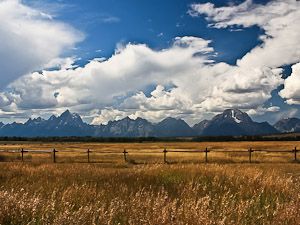
Can Wildlife Films Make a Difference?
Filmmakers from all over the world attend the Jackson Hole Wildlife Film Festival to join an eclectic but tight-knit community of industry professionals and enthusiasts and to explore the emerging new technologies. Social events allow delegates to meet and mingle, to throw around new ideas and propose new adventures.
But can wildlife films truly make a difference?
Films that feature wildlife and natural history have a long story. The Germans were among the first to capture animal behavior on film in Das Boxende Känguruh (Mr. Delaware and the Boxing Kangaroo), which premiered in 1895. Though the animal was captive, the film brought to light ideas about animals and the ways that they interact with humans that no one had ever observed. The Sea Lions at Home, largely considered to be the first true wildlife film, premiered in 1897 and featured sea lions in their habitat. By 1948, Walt Disney had joined the trend, creating films that anthropomorphized its subjects in hopes of creating a connection between animal and human.
These beginnings were soon followed by the names we grew up with: David Attenborough and Jacques Cousteau and the many BBC shows that featured wildlife themes. SOS Rhino came out in 1961 and is considered one of the earliest conservation-themed movies. Others soon followed with varying conservation messages, some more cautious than others.
Today, however, conservation films are still hard to develop and sell. Networks tend to stay away from conservation issues because they see them as controversial, and controversy can scare away advertisers and viewers. Instead, networks and major companies focus on so-called blue-chip films that avoid political and environmental messages and focus on the beauty of the natural world. In these movies, scenic landscapes and herds of charismatic wild animals are held as separate from the human world, creating stunningly attractive but cliché clips. But this year at the Wildlife Film Fest, conservationists are once again making headway in an ocean of blue-chip landscapes.
Vitale, in her film about climate change in Bangladesh, followed passionately her own environmental leanings and her experiences living as a photojournalist in India. "I lived in Asia for more than six years and covered a lot of conflicts," she said. "When people talk about migration, your first thought is that it comes from wars. Actually, I did a lot of research and found that the biggest cause of migration in this area is climate change. And it doesn't get any worse than in Bangladesh."
A sea level increase of as little as one meter could put millions of people in Bangladesh out of their homes and ruin their livelihoods. "I thought, wow, that's pretty crazy, so I went to see what it looked like." What Vitale saw makes her message even more poignant. "It's not something that's going to happen sometime in the future; it's happening right now."
Other filmmakers use their conservation message to address problems on the ground. My Pantanal is more than just an educational and entertaining children's film. Heydlauff is using the film, originally produced in Portuguese, to reach local ranchers and other community members, and she hopes that by using a child's perspective, she can reach more people and help protect both cattle and jaguars.
"This is one of many tools we use to conserve jaguars," she said. "If anything, I hope it's a lure, I hope it catches people's attention, but the real goal is to convince people to try these mitigation techniques and to see the positive results from using them. I want this film to help these ideas catch on like wildfire."
These conservation messages are affecting filmmaking veterans as well. For Argo, the passion many newcomers have for the environment and environmental protection is one of the reasons she keeps coming back to Jackson Hole.
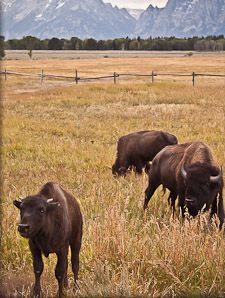
For Palmer, however, it is difficult to say what kind of impact conservation-themed films have in the long run. Changes in behaviors and changes in legislation don't necessarily mean a change in perception.
"People like me who make these types of films hope that they will make a difference, and we take care to make sure that happens," he said. "We have outreach campaigns, we put things in the film that tell people what kinds of actions they can take, but we still don't know..."
Despite some reservations, however, this year many films – including some from the major producers – advocate a certain level of action on the part of the viewers. The Last Lions, a National Geographic production, juxtaposes the lives of its subjects with the continuous expansion of humans, and warns that if it continues, these very well could be the last lions. L'Homme Aux Serpents (Snake Man) draws interesting comparisons between rebel-occupied territories – undeveloped and largely virgin – and the developed lands owned by the government, a disturbing yet thought-provoking assertion. And nearly all of the newcomer films are fueled by passion and are about more than simply scenery and close-ups of rare creatures.
And here at the 2011 Jackson Hole Wildlife Film Festival, there was a place for all of them.
Photos are copyright protected and may not be used without permission. Photos are used with the permission of Kathryn and Jonmikel Pardo.